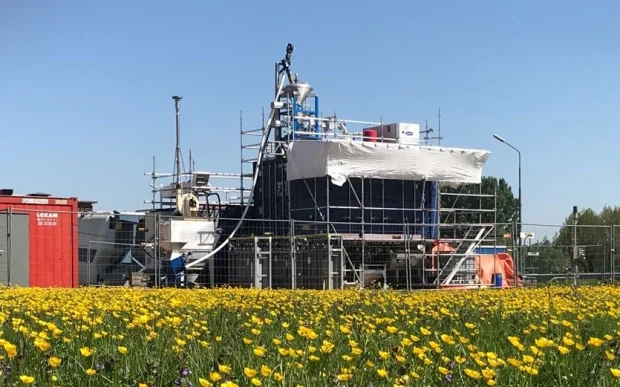Projects
Towards a circular future with raw materials from paper sludge
Calcium carbonate (CaCO3) is a versatile and crucial raw material. The global market volume is nearly 10 billion kg per year. Calcium carbonate is widely used in various applications, such as paper, carpets, ceramics, glass, toothpaste, and medicines. At the end of their life cycle, these products often end up as waste in landfills or are incinerated. This not only results in the loss of the material but also releases a significant amount of CO2 that is present in the calcium carbonate. There is great potential for adopting a circular approach to this valuable substance.
A significant portion (approximately 25%) of the global consumption of calcium carbonate can be attributed to the paper industry. The primary waste stream of this industry, paper sludge, contains valuable minerals and substantial amounts of calcium carbonate that are typically incinerated and thus unnecessarily lost. For the production of new paper products, calcium carbonate is extracted from limestone mines. There is great potential for circular utilization of the valuable components in paper sludge. Pyrolysis is a potentially effective method for processing waste streams into basic raw materials. During pyrolysis, materials are broken down into basic components in the absence of oxygen and under elevated temperature. The resulting products consist of solid-, gas-, and oil fractions. However, current pyrolysis techniques are unable to separate the mineral raw materials from the product fractions.
The Alucha Process
Alucha has developed a process for recovering lost minerals and calcium carbonate from paper sludge, while simultaneously producing pyrolysis oil: CCC (Circular Calcium Carbonate) and bio-oil. They have developed their own patented pyrolysis technique, in which organic molecules are continuously broken down into smaller organic molecules under constant heat. The produced CCC can serve as an alternative to the commonly used linearly extracted ground calcium carbonate (GCC). Additionally, the pyrolysis oil can be used as a biofuel, replacing fossil fuels, or as a raw material for the production of bio-based chemicals.

Innofunding has applied for a subsidy for Alucha and supported her during the successful pilot project of the pyrolysis technique, which allowed Alucha to test the technology under practical conditions (as shown in the Figure, Mine 1). Due to this success, Alucha plans to invest in a demonstration plant (Mine 2), which will be approximately 30 times larger than Mine 1. Innofunding will once again provide support in the subsidy application for this demonstration plant.
For more information: www.alucha.com
This project was carried out with the subsidy from the Ministry of Economic Affairs, National EZ Subsidies Regulations and Topsector Energy, implemented by the Netherlands Enterprise Agency (Rijksdienst voor Ondernemend Nederland).
